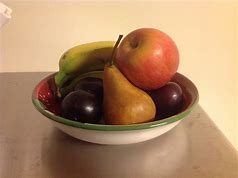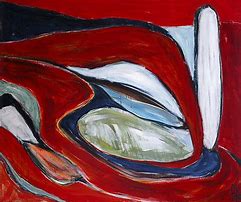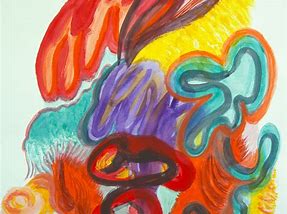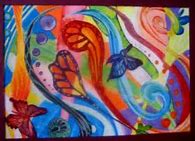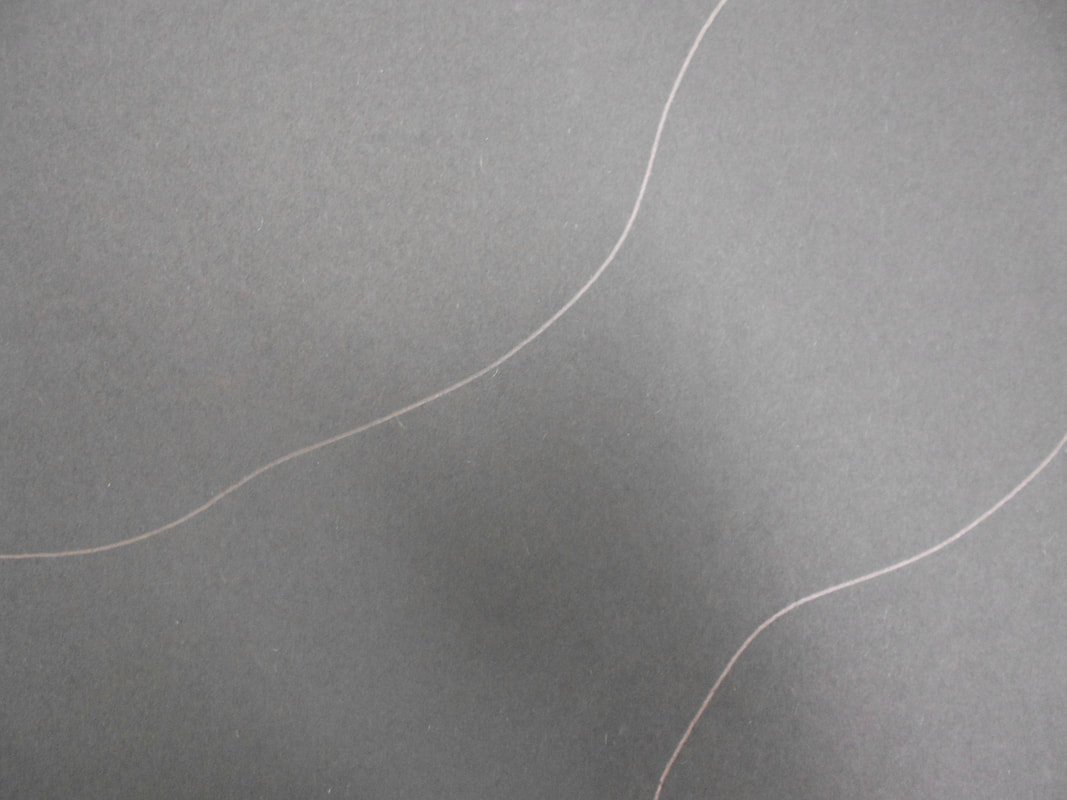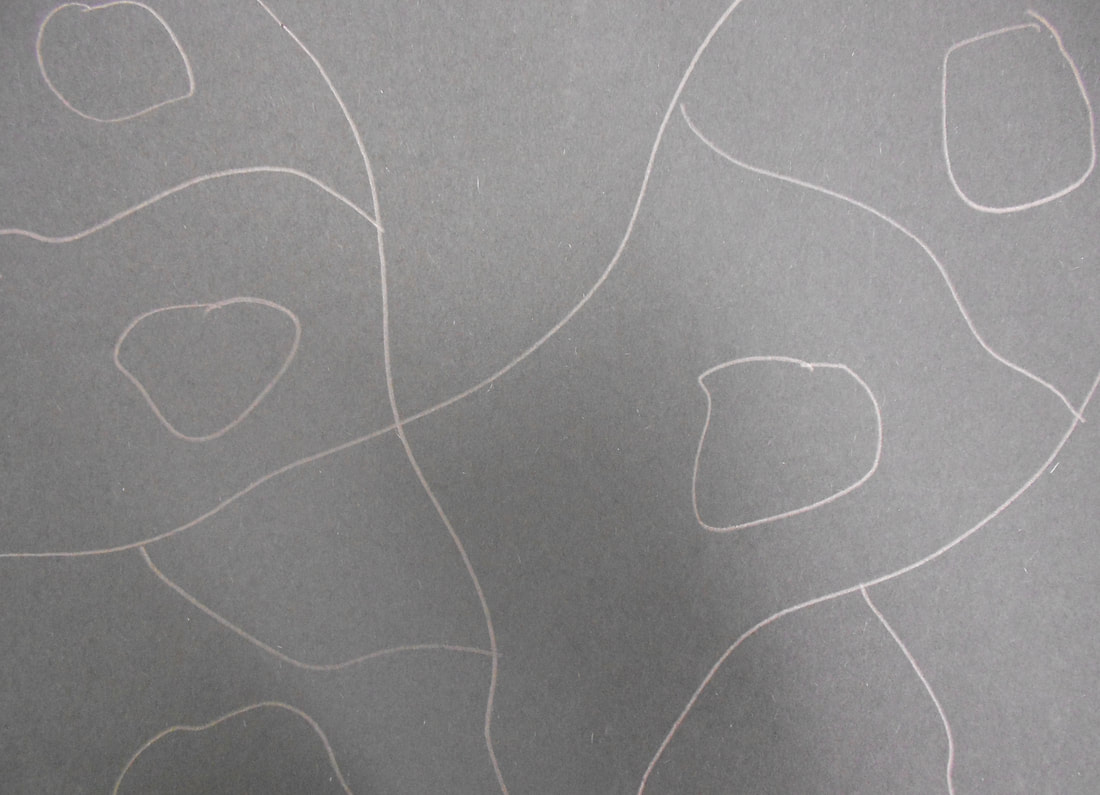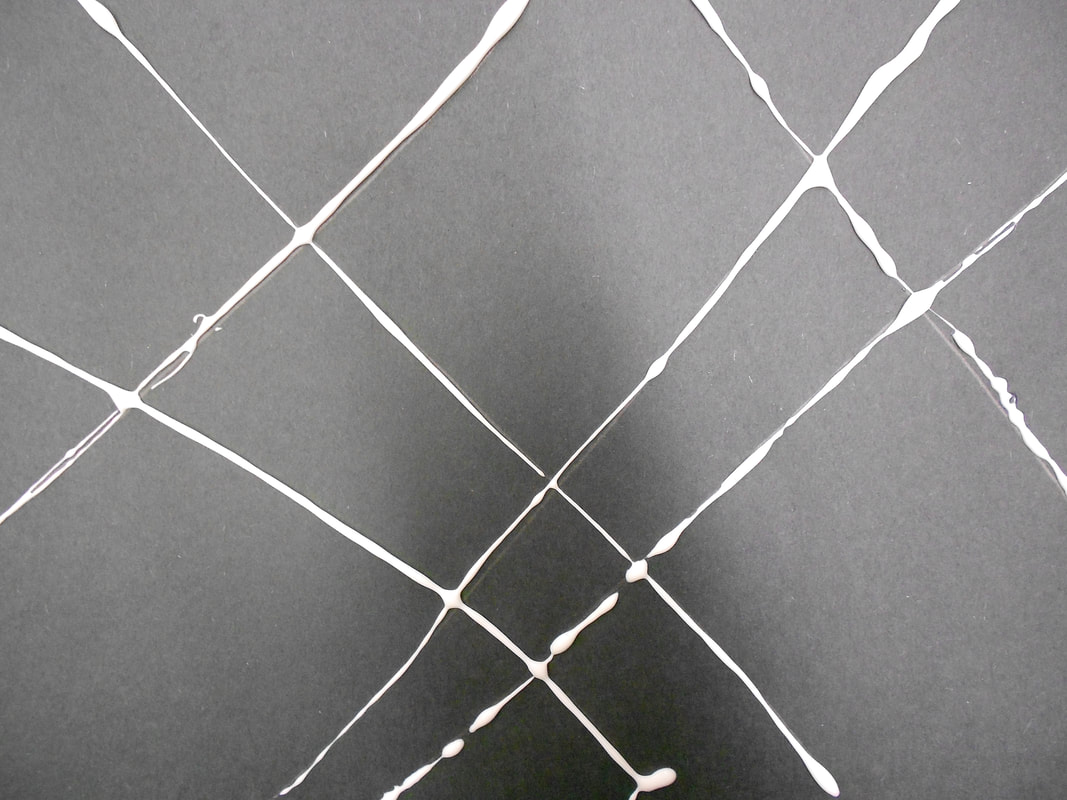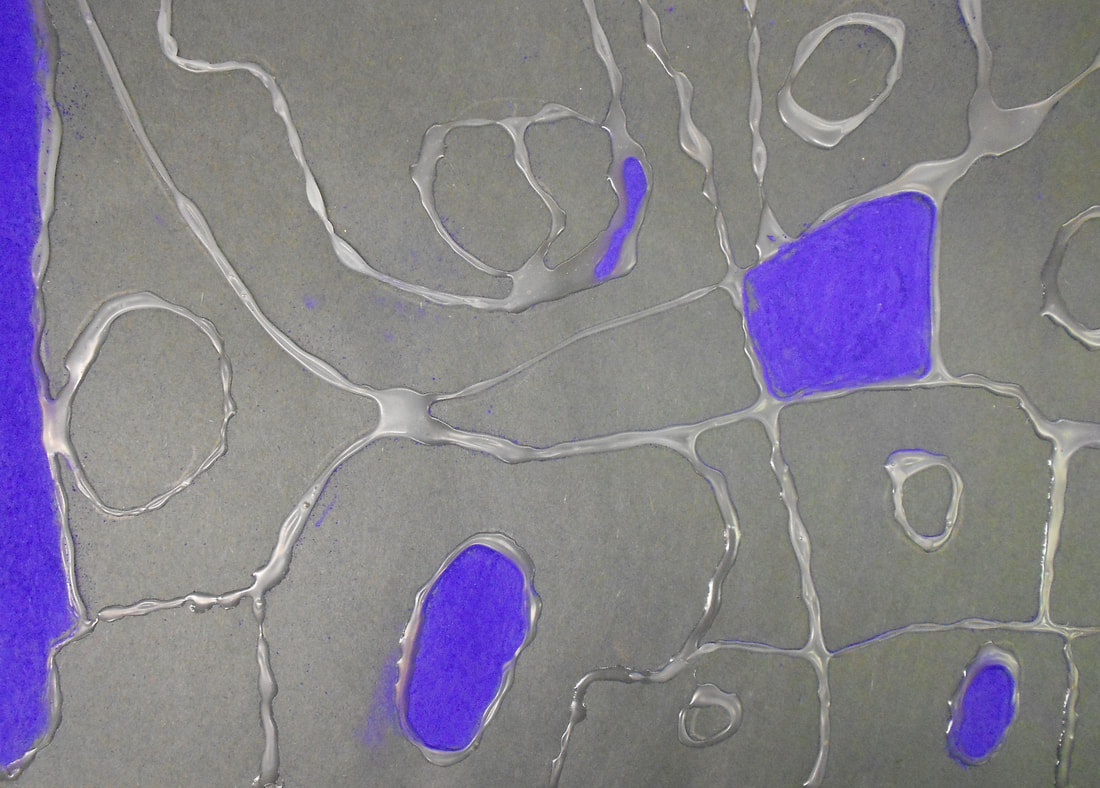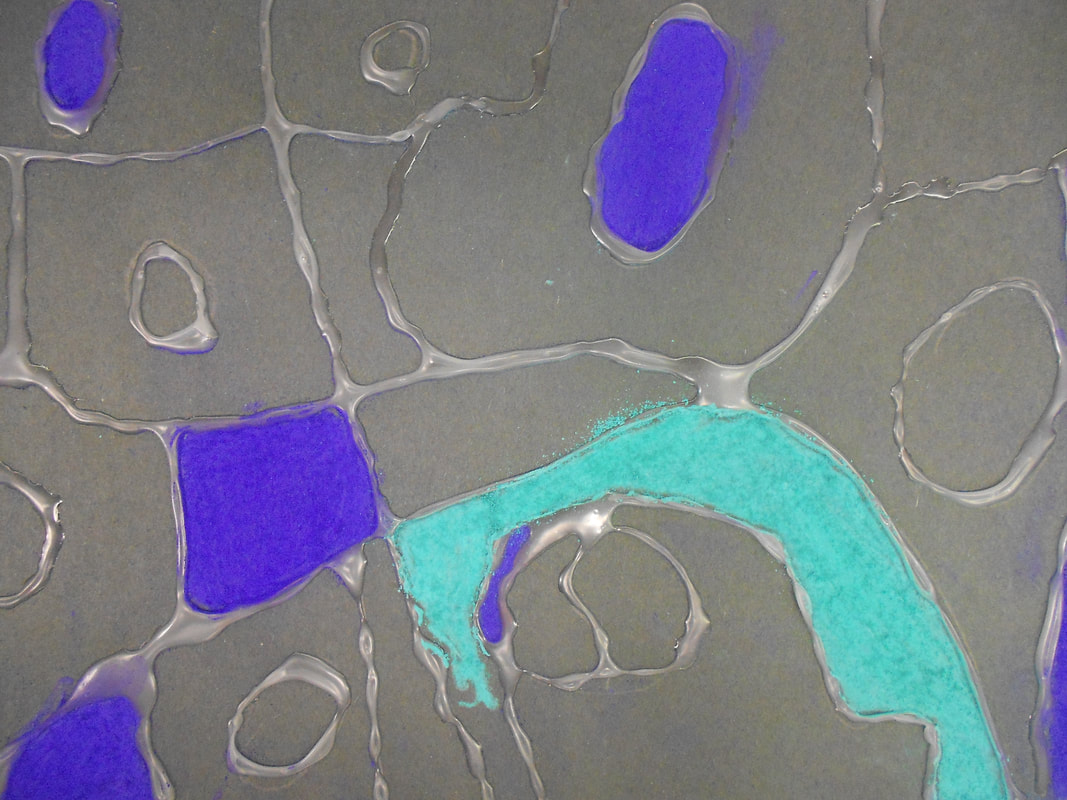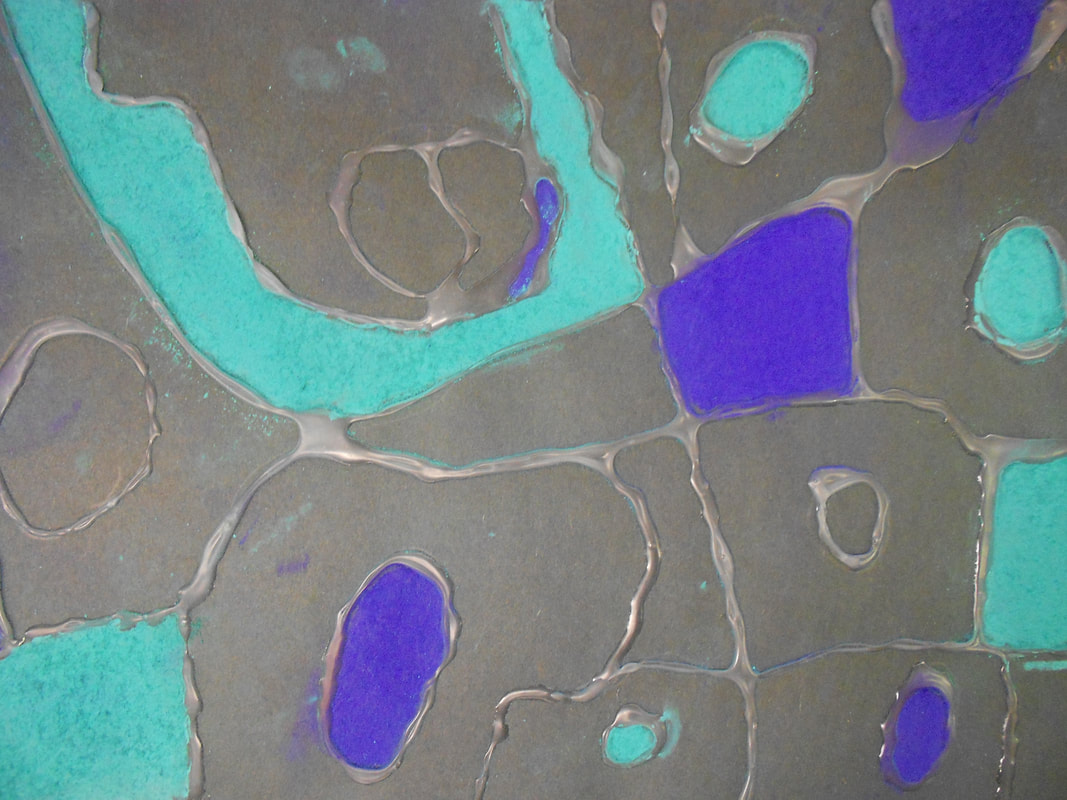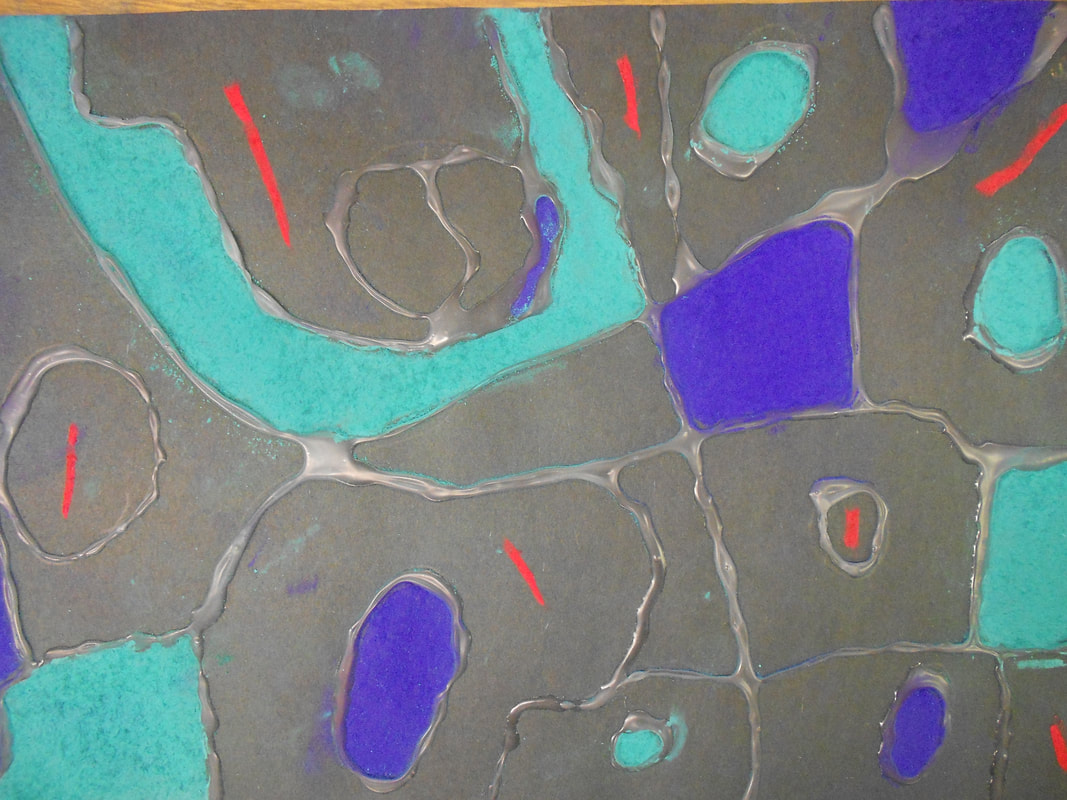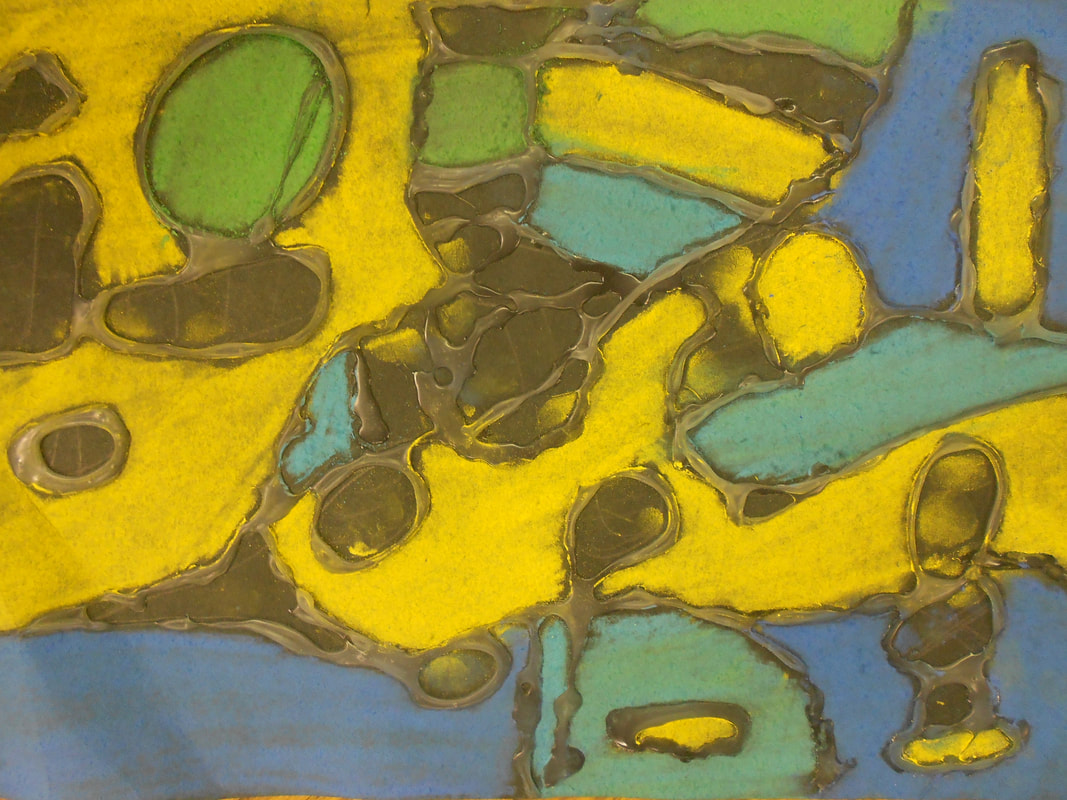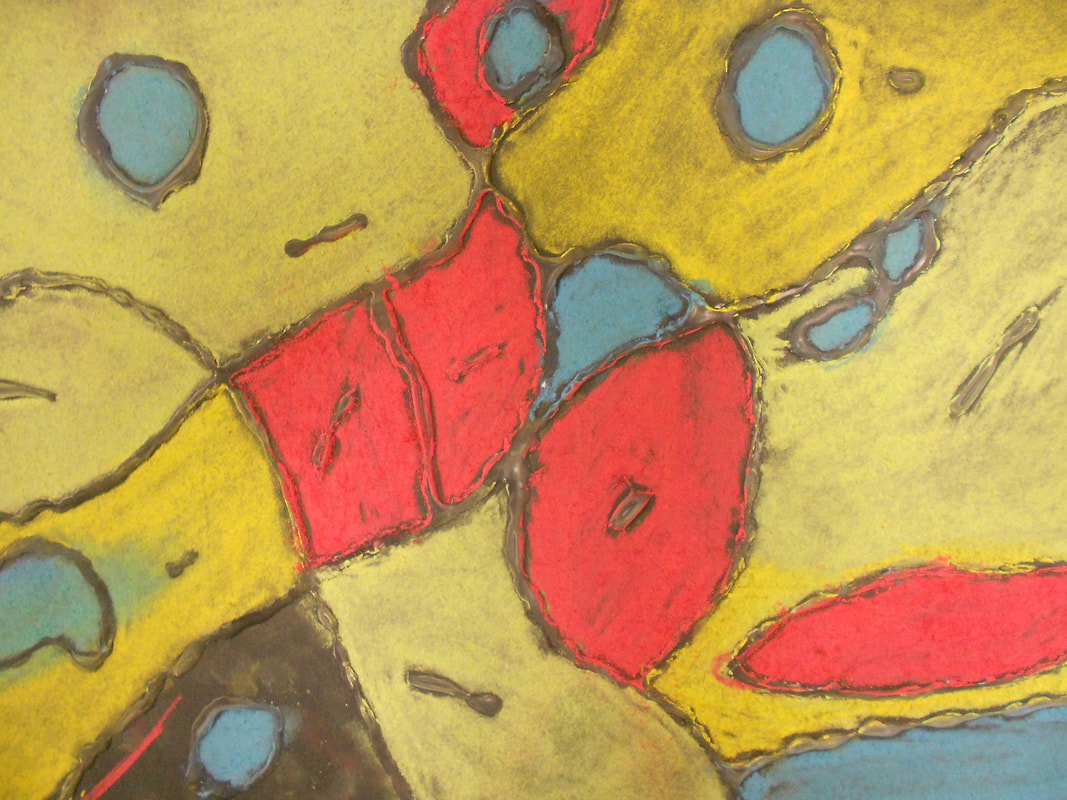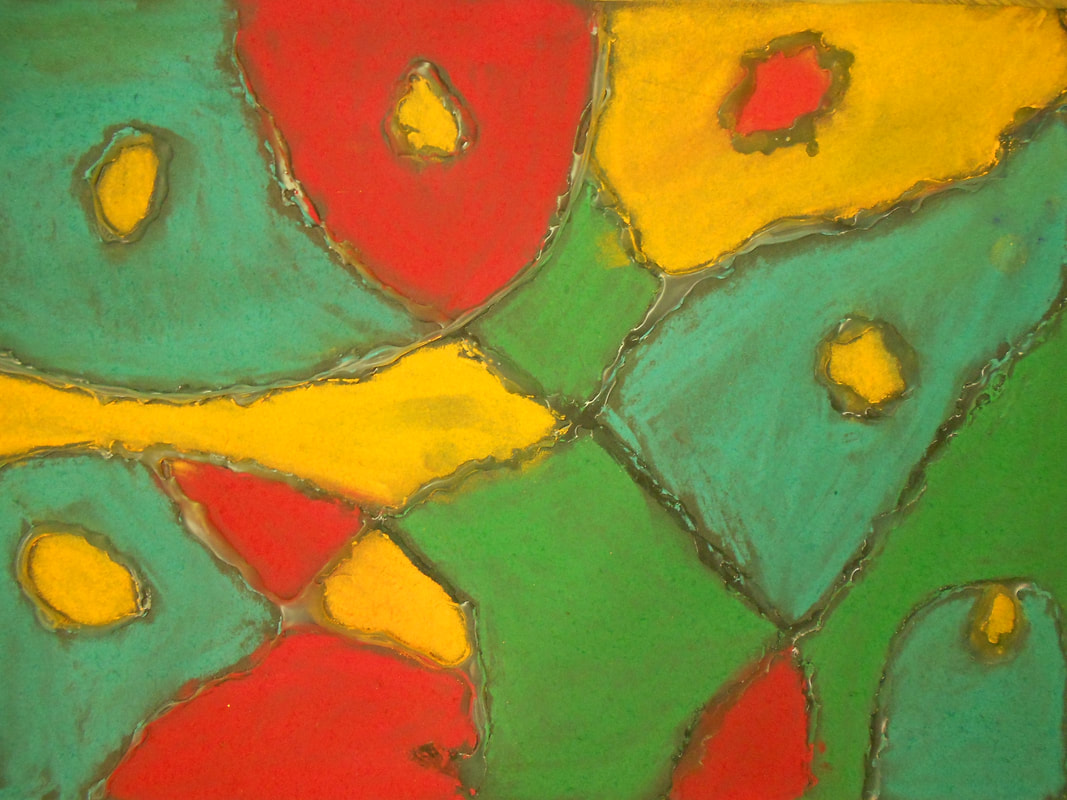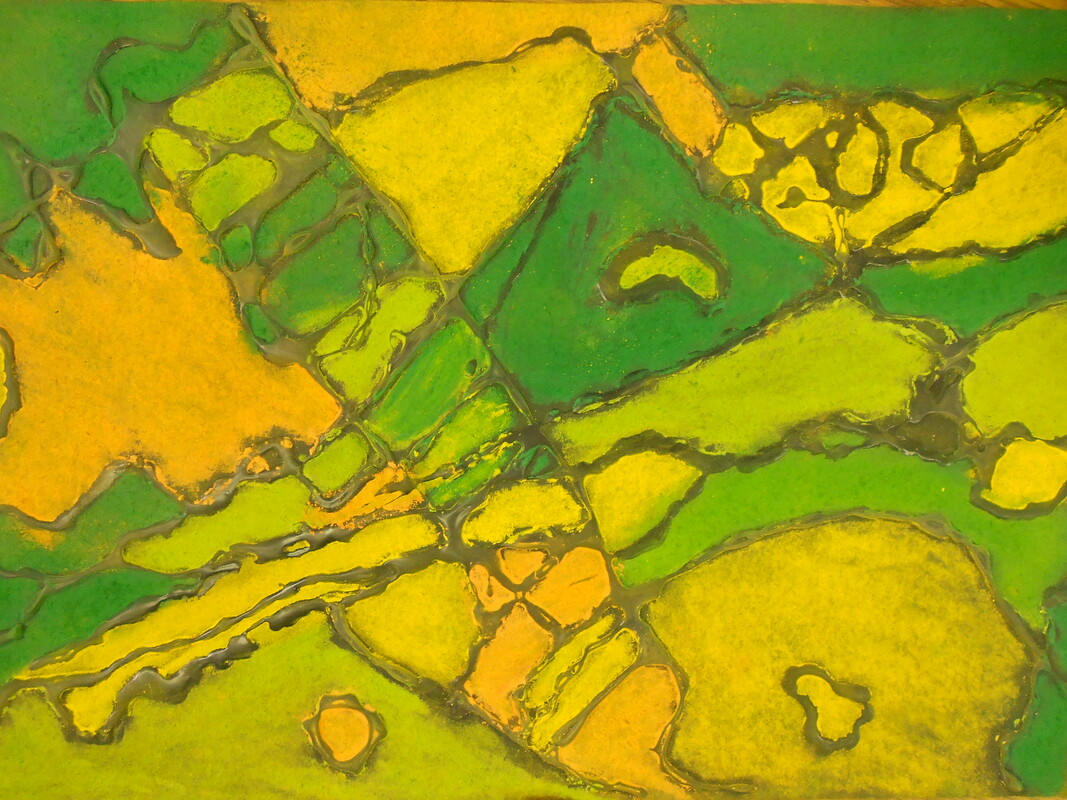oil pastel abstract lesson
or "Draw with glue"
The following is a 2th grade art lesson on creating a simple, creative + exciting piece of abstract art. Students will draw with glue + color using in oil pastels.
Scroll down to find:
Scroll down to find:
- examples of abstract art.
- step-by-step instructions with pictures of the project
- a lesson plan (including California State Visual Art Standards)
examples of abstract art by various artists
step-by-step
objective
Students will make a simple, abstract art work by drawing with glue + coloring with oil pastels. Artwork will include a simple life work The artwork will be unique to each artist.
materials
- approx. 9"x12" black construction paper
- oil pastels
- NOTE: choose 3 or 4 colors to color project
- liquid glue
- an area set side for projects to dry fo a few days prior to coloring
vocabulary
- Abstract - Artwork in which the subject matter is stated in a brief, simplified manner. Little or no attempt is made to represent realistically, and objects are often simplified or distorted.
- analogous - Refers to closely related colors; a color scheme that combines several hues next to each other on the color wheel.
- Balance - Visual equilibrium in a composition; achieved by organizing the weight and attention of all elements in an artwork. Types of balance are symmetrical, asymmetrical, radial, and crystallographic.
- color - The visual sensation dependent on the reflection or absorption of light from a given surface. The three characteristics of color are hue, value, and intensity.
- cool colors - Colors suggesting coolness; blue, green, and violet.
- color relationships - Also called schemes or harmonies. They refer to the relationships of colors on the color wheel. Basic color schemes include monochromatic, analogous, and complimentary.
- elements of art - sensory components used to create works of art: line, color, shape/form, texture, value, space.
- Harmony - The principle of design that combines elements in a work of art to emphasize similarities of separate but related parts.
- media - Plural of medium, referring to materials used to make art; categories of art (e.g., painting, sculpture, film).
- organic - refers to shapes or forms having irregular edges or to surfaces or object resembling things existing in nature.
- shape - a two-dimensional work of art either in the round (to be viewed from all sides) or in bas relief (low relief in which figures protrude slightly from the background).
- Space - An area in which objects or images can exist.
- Unity - Total visual effect in a composition achieved by the careful blending of the elements of art + the principles of design.
- warm colors -Colors suggesting warmth; red, yellow, and orange.
activity
- Show students examples of abstract art created by various artists.
- See step-by-step examples given.
- Demonstrate the coloring process + where each color goes prior to students working on their projects. Give students an opportunity to choose colors.
variation
- have students choose from given color schemes (e.g. analogue, cool colors, warm colors)
- draw a simple still life with glue + color
ca state visual arts standards
1.0 ARTISTIC PERCEPTION
Processing, Analyzing, and Responding to Sensory Information Through the Language and Skills Unique to the Visual Arts
Analyze Art Elements and Principles of Design
1.3 Identify the elements of art in objects in nature, the environment, and works of art, emphasizing line, color, shape/form, texture, and space.
2.0 CREATIVE EXPRESSION
Creating, Performing, and Participating in the Visual Arts
Skills, Processes, Materials, and Tools
2.2 Demonstrate beginning skill in the use of art media, such as oil pastels, watercolors, and tempera
4.0 AESTHETIC VALUING
Responding to, Analyzing, and Making Judgements About Works in the Visual Arts
Derive Meaning
4.2 Compare different responses to the same work of art
Make Formal Judgements
4.3 Use the vocabulary of art to talk about what they wanted to do in their own works of art and how they succeeded.
Processing, Analyzing, and Responding to Sensory Information Through the Language and Skills Unique to the Visual Arts
Analyze Art Elements and Principles of Design
1.3 Identify the elements of art in objects in nature, the environment, and works of art, emphasizing line, color, shape/form, texture, and space.
2.0 CREATIVE EXPRESSION
Creating, Performing, and Participating in the Visual Arts
Skills, Processes, Materials, and Tools
2.2 Demonstrate beginning skill in the use of art media, such as oil pastels, watercolors, and tempera
4.0 AESTHETIC VALUING
Responding to, Analyzing, and Making Judgements About Works in the Visual Arts
Derive Meaning
4.2 Compare different responses to the same work of art
Make Formal Judgements
4.3 Use the vocabulary of art to talk about what they wanted to do in their own works of art and how they succeeded.
This website uses marketing and tracking technologies. Opting out of this will opt you out of all cookies, except for those needed to run the website. Note that some products may not work as well without tracking cookies.
Opt Out of Cookies